Portable Space Heaters: Types, Applications, Pros and Cons, and Safety Precautions
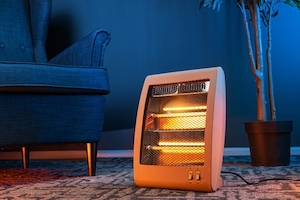
Figure 1: Space heaters excel at heating specific spaces rather than an entire building.
Portable space heaters provide targeted warmth, making them suitable for use in areas central heating systems cannot reach. They are available in different types and models based on the heating technology and features. This guide discusses various types of space heaters, their applications, pros and cons, and safety precautions to observe.
Table of contents
- Types of space heaters
- Fan space heaters
- Ceramic heaters
- Infrared space heaters
- Oil-filled space heaters
- Propane space heaters
- Portable space heaters safety
- FAQs
Types of space heaters
A portable heater is designed to heat a small area, such as a room or personal space. It can easily move from one location to another. Typical heaters are small and lightweight and have handles or wheels that make them easy to move. Some portable heaters are powered by electricity, while others run on fuel, such as propane.
Fan space heaters
Typical fan space heaters use an electric heating element to generate heat. Some use hot water tubing or fuels such as gas or kerosene. A fan in the heater moves heat away from the heating element and into the surrounding air. These space heaters range from personal to industrial applications.
- Personal: 2 kW space heaters (Figure 2 left) are adequate for most applications. These require 220/230 V from the electrical source. 110/120 V electrical sources can handle 1.5 kW fan space heaters
- Industrial: 220/230 V electrical sources can handle up to 3 kW industrial space heaters (Figure 2 right), which are ideal for industrial applications.
Safety
Regarding safety, electric space heaters have a thermal fuse near the heating element that breaks to prevent overheating. Metal cases are safer than plastic in the case of a fire.
Pros
- Size: Fan space heaters are typically small and lightweight, suitable for heating small rooms.
- Safety: Fan space heaters are safe to touch.
- Cost: The upfront cost of fan space heaters is low.
Cons
- Heat retention: Fan space heaters do not have a ceramic material to hold the heat, so they stop heating the moment they lose power.
- Heating area: Personal fan space heaters can only heat small rooms.
- Power cost: Electric fan space heaters use more electricity, which is more expensive than fuel.
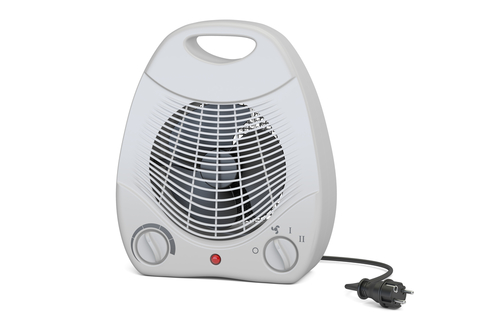
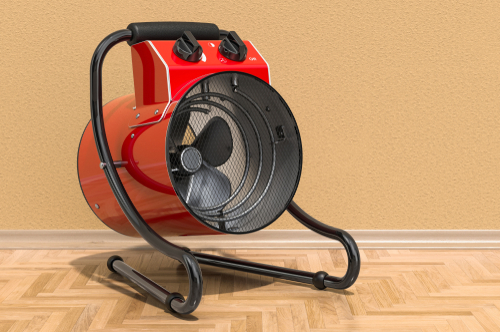
Figure 2: A portable fan space heater (left) and industrial fan space heater (right).
Ceramic heaters
A ceramic space heater (Figure 3) has a ceramic block heated by electricity. Ceramic is a conductor to semiconductor, meaning electricity does not flow through it very well. The electrons collide with the ceramic’s atoms, transferring energy to the atoms in the form of heat. This is electrical resistivity and why ceramic heats up quickly as electricity passes through it. When a ceramic heater operates, electricity moves through alloy plates into connected ceramic blocks. The ceramic blocks turn red from the high heat, transferring the heat into the air through convection. As the ceramic reaches the desired temperature, the electric current reduces.
Ceramic heaters with a fan use convection to blow heat into a room. These ceramic heaters can heat a room faster than those without a fan. However, they are less economical. These heaters have two main designs:
- Fin design: Aluminum fins connect to the ceramic blocks and heat up via conduction. This increases the surface area of heated material that the air blows across. This style of ceramic heater heats a room faster than the alternative.
- Honeycomb design: The ceramic blocks have honeycomb-shaped holes in them that air can blow through. These do not require fins.
Safety
The ceramic space heater has numerous safety features, such as temperature and tilt sensors. The temperature sensor monitors the heat of the ceramic blocks and shuts off the heater to prevent overheating. Due to their electrical resistivity, it is unlikely that a ceramic blocks will overheat. However, it is possible for the blocks to heat enough to damage the heater’s other components and start a fire. This happens in the case of the heater being placed too close to something flammable, in a cramped space, or if there is an electrical surge. The tilt sensor will turn off the heater if it falls over.
Pros
- Effectiveness: Ceramic heaters heat up a space quickly.
- Operation: The ceramic plates allow these heaters to continue heating the room even after unplugging the power supply.
Cons
- Space: Ceramic heaters are not suitable for heating large rooms.
- Power consumption: Ceramic heaters consume a lot of electricity.
- Flexibility: Objects in front of ceramic heaters can block heat.
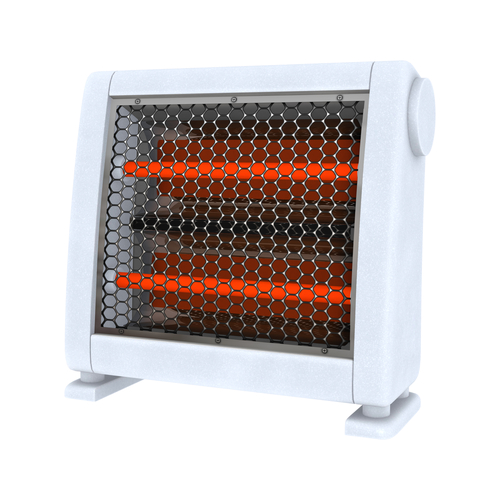
Figure 3: A ceramic space heater
Infrared space heaters
Infrared space heaters (Figure 1) emit electromagnetic waves in the infrared region that heat the surrounding physical objects, similar to how the sun heats Earth through radiation. These heaters do not heat the surrounding air, so they are more efficient than other space heaters.
Infrared space heaters use a special heating element called a quartz tube or ceramic plate to produce infrared radiation. When the element is energized, it heats up and emits infrared radiation, which travels through the air until it strikes an object. After hitting the object, the radiation is absorbed and converted into heat, warming the object up.
There are three types of infrared heaters:
- Infrared space heater: These look and operate similar to other types of space heaters. The heating components are in a casing that is safe to touch.
- Infrared heating panels: These panels are typically mounted on a wall and produce heat up to 100 °C (212 °F). They can be briefly touched for about 2 seconds without causing damage.
- Outdoor space heaters: Outdoor space heaters that use infrared are more dangerous because they need to get much hotter to effectively heat a space.
Safety
The safety of an infrared heater depends on what type of infrared light it emits.
- Far-infrared (long-wave radiation): Far-infrared is safe. All infrared panels and most infrared space heaters emit far-infrared.
- Mid-infrared (medium-wave radiation): If an infrared space heater emits a soft, red glowing light, it is emitting some mid-infrared. Do not stare into it.
- Near-infrared (short-wave radiation): Industrial applications make use of near-infrared for high-heat applications. Exposure to this can lead to burns.
Pros
- Housing: An infrared space heater’s housing is cool to the touch.
- Heat retention: Heated objects retain heat after the infrared heater stops operating.
- Design: Some infrared heater models have a wooden design that makes them look like a piece of furniture.
Cons
- Direction: Heat travels in one direction.
- Size: Infrared space heaters are bulky.
- Price: Infrared space heaters are more expensive than ceramic and fan space heaters.
Oil-filled space heaters
Also known as oil-filled radiators, these space heaters have oil-filled "fins'' heated via resistors inside the heater. The oil heats up when electricity passes through it, but it never burns or requires replacement. The oil in the fins retains heat for hours without consuming extra energy.
The oil-filled space heating technology is almost silent, making it suitable for warming bedrooms and other noise-sensitive rooms. These portable heaters have a thermostat to control a room's warmth. Others come with an ECO mode that cycles the unit in on and off intervals, keeping the room temperatures constant.
Safety
Oil-filled space heaters (Figure 4) are safe due to the oil being inaccessible from the outside. Also, many have casing that allows the heaters to be touched without the risk of burning. It’s important to ensure that an oil-filled space heater is certified by Underwriter Laboratories, which is an international and independent safety science company.
Pros
- Effectiveness: Oil-filled space heaters continue heating a space after the heater is turned off or unplugged.
- Efficiency: Oil-filled heaters are energy efficient because they do not need a constant energy supply.
Cons
- Size: Oil-filled heaters are bulkier than other types.
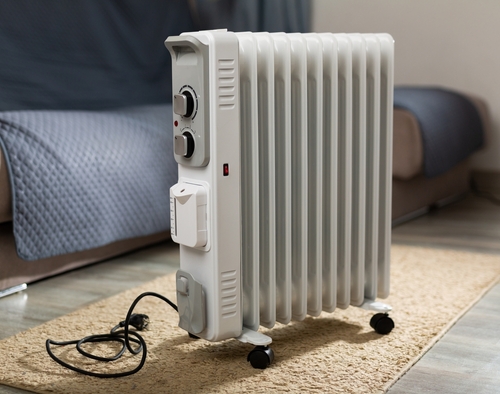
Figure 4: An oil-filled space heater
Propane space heaters
Propane space heaters use liquid propane rather than electricity to heat a space. This makes them more portable than electric alternatives and more efficient in reducing utility costs. These space heaters produce heat through combustion. When propane ignites, it produces propane vapor. The vapor is burned inside the heater's combustion channel, producing heat that transfers to the surrounding air, thus providing heat to the space.
Propane space heaters heat spaces faster than other space heaters. There are different propane space heaters, including wall-mounted, radiant, forced air, and portable propane space heaters. These heaters use the same technology to heat a room as infrared heaters. They produce electromagnetic waves that heat nearby objects, making them suitable for outdoor warming spaces.
Safety
Indoor propane space heaters can be safe when the proper precautions are taken.
- CO detectors: Place carbon monoxide detectors around the house to be alerted if carbon monoxide levels are too high.
- Ventilation: Leave a window near the heater about 8 cm (3 in) open to promote proper ventilation.
- Sensors: Ensure the propane space heater has an oxygen sensor connected to an automatic shutoff switch if CO levels get too high.
- Flame color: The propane space heater’s flame should be blue. If it turns orange, shut off the space heater because it is not burning the propane correctly.
- Clearance: Maintain approximately 1 m (3 ft) of space around the heater.
- Attendance: Do not leave the propane space heater operating unattended.
Pros
- Portability: Propane space heaters are not limited by a power cord.
- Cost: Propane space heaters have a relatively affordable upfront cost.
- Ease of use: Propane space heaters are very easy to operate.
- Heat: Propane space heaters produce the hottest heat.
Cons
- Fuel: Propane heaters must have fuel to operate, meaning the inconvenience and cost of replacing propane tanks.
- Fire risk: Propane heaters have an increased risk of fire.
- Ventilation: Propane heaters require proper ventilation as some types emit carbon monoxide.
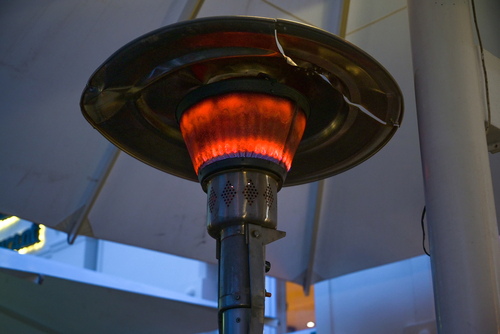
Figure 5: A gas-fired patio heater
Portable space heaters safety
Using portable space heaters inappropriately, keeping them near combustible materials, or operating them when faulty increases the risk of fire, carbon monoxide production, or electric shock. It's possible to minimize the risks of an accident by practicing safe usage, such as:
- Turning off the heater when no one is in the room.
- Ensuring that the electric cords are in good condition and are not frayed or damaged.
- Using them in areas with no flammable materials.
- Placing the heater in a level area where it cannot be tripped.
- Ensuring the heater plug or cord is not hot during usage. If it gets hot, discontinue usage.
- Buying a safety-certified heater.
Read our articles on solar, radiant floor, and electric infrared heaters for more details on various heater types.
FAQs
Do portable space heaters consume a lot of electricity?
Portable space heaters use an average of 1500 Watts, or 1.5kWh per hour. If the electricity in your house costs 20 cents per kWh, the heater's electricity use will cost 30 cents per hour.
Are there cordless space heaters?
Yes. There are cordless space heaters, the best being the propane space heater.
Can a room be heated without a central heating system?
Yes, any room in the house can be heated using a portable space heater that the HVAC-R system doesn't reach.



